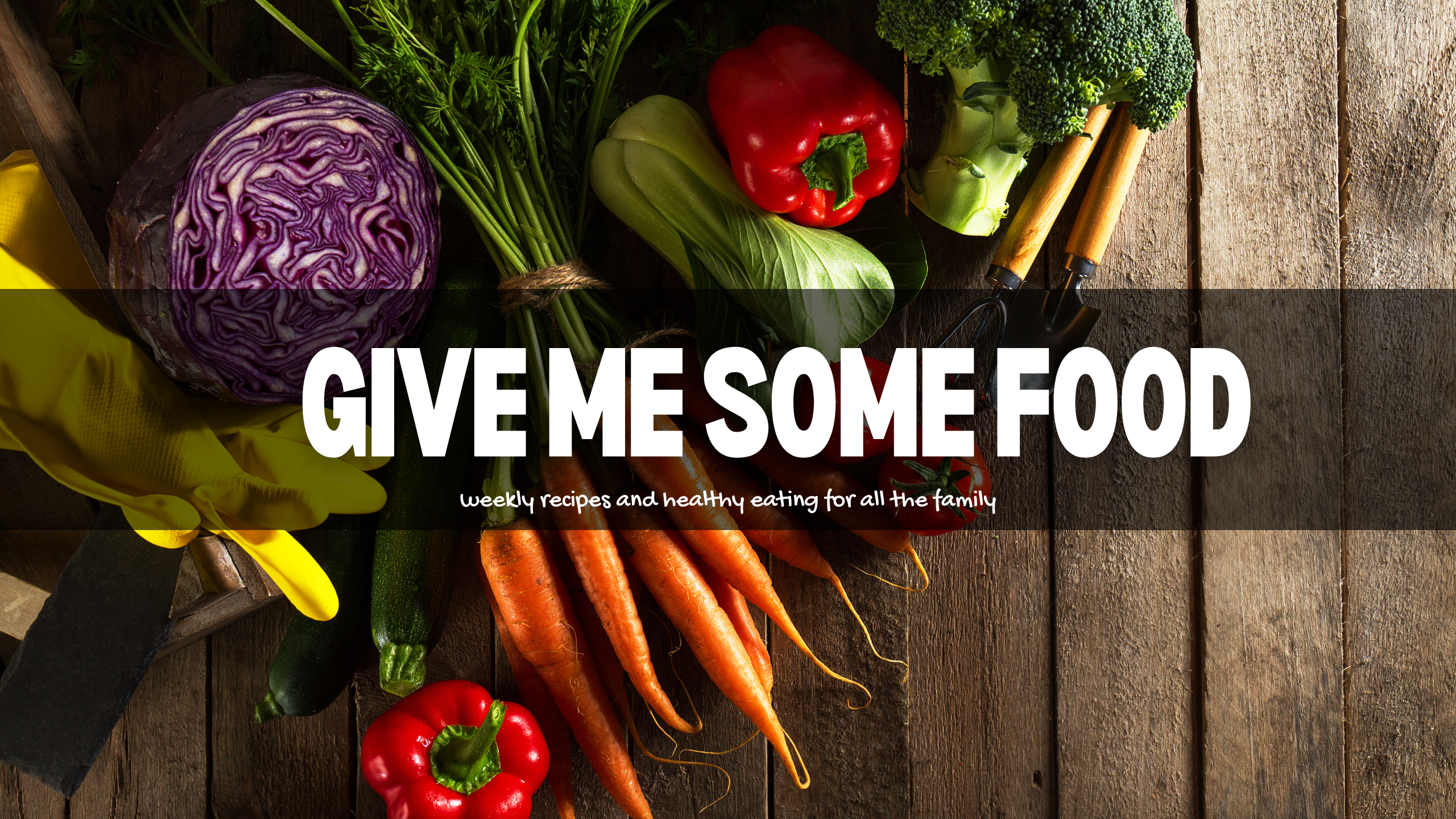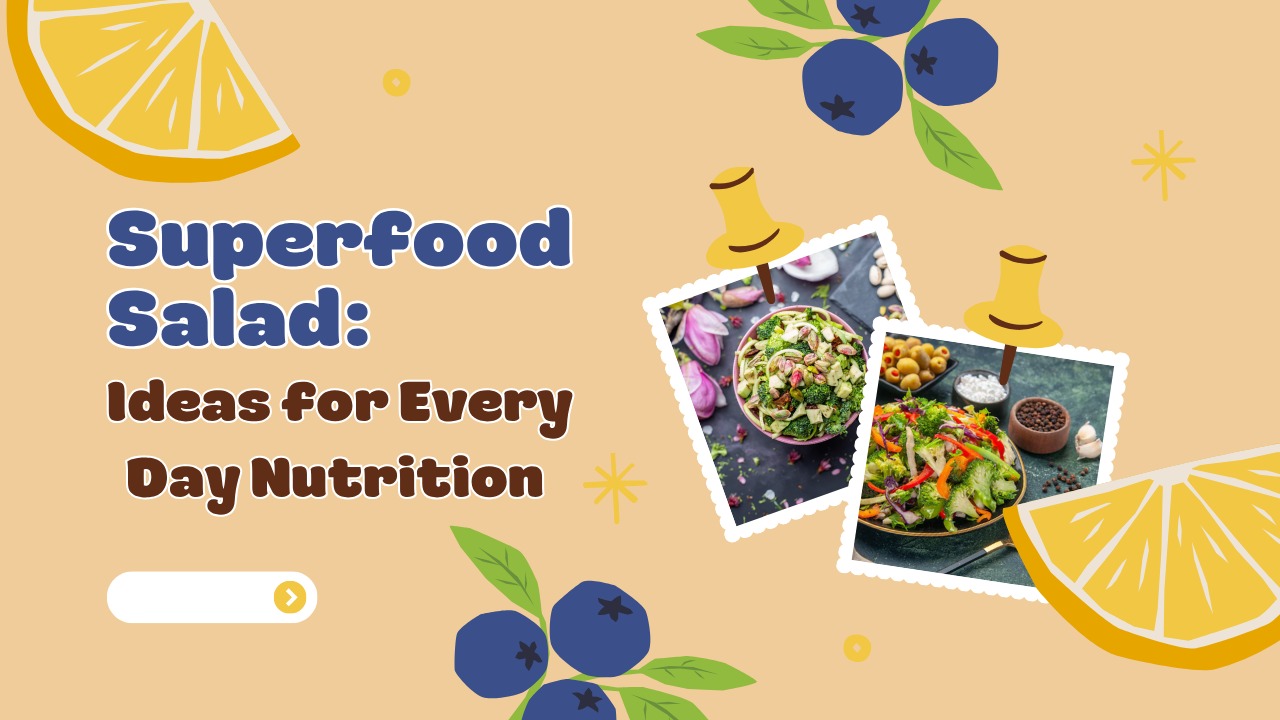Superfood salad is a simple yet powerful way to nourish your body with essential nutrients. In a busy lifestyle, where fast food often replaces wholesome meals, choosing a nutrient-dense superfood salad can be a game-changer. These salads combine a variety of vibrant ingredients such as leafy greens, berries, seeds, nuts, and lean proteins to deliver maximum health benefits in every bite.
Adding a superfood salad to your routine supports overall wellness. The antioxidants help fight inflammation, vitamins strengthen immunity, and fiber promotes digestion. You can easily customize your salad to meet dietary needs—whether you’re aiming for weight loss, detoxification, or simply maintaining good health.
Incorporating a superfood salad doesn’t require much time or effort. With a little planning, you can prep ingredients ahead and mix a satisfying bowl in minutes. From office lunches to dinner sides, superfood salads are a flavorful, easy, and effective step toward a healthier lifestyle.
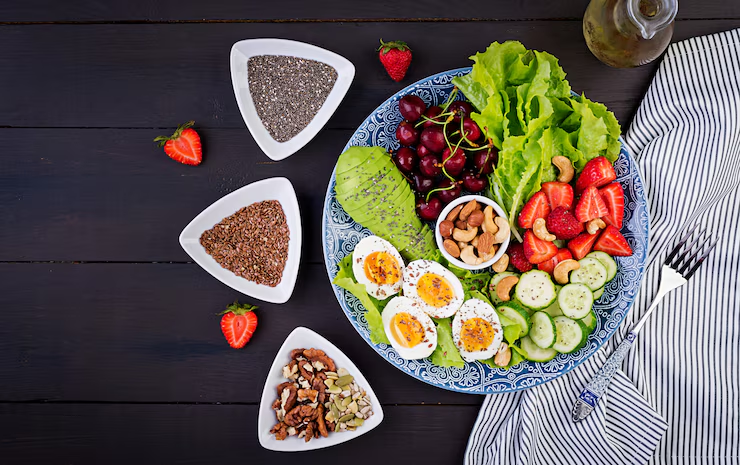
What is a Superfood Salad ?
A superfood salad is a nutrient-dense salad that includes a variety of foods considered “superfoods.” Superfoods are nutrient-rich foods that are packed with vitamins, minerals, antioxidants, and other beneficial nutrients that support overall health. These foods help fight disease, promote healing, boost energy, and provide essential nutrients for the body.
Superfood salads combine these nutrient-rich ingredients into a colorful and vibrant dish, making them an excellent choice for anyone looking to improve their diet and overall well-being. These salads can vary in ingredients but typically contain a mix of leafy greens, fresh vegetables, nuts, seeds, fruits, and proteins like beans, quinoa, or grilled chicken.
Why Should You Eat a Superfood Salad ?
A superfood salad is one of the simplest and most effective ways to nourish your body. These salads are made with nutrient-dense ingredients like leafy greens, berries, nuts, seeds, avocados, and quinoa. Each component is packed with essential vitamins, minerals, antioxidants, and healthy fats that promote overall well-being.
Including a superfood salad in your daily diet can boost your immunity, support digestion, and even improve mental clarity. The antioxidants present in superfoods help fight free radicals, reducing inflammation and the risk of chronic diseases. Plus, the fiber content keeps you full longer, aiding in healthy weight management.
Superfood salads are also incredibly versatile and customizable. You can switch up ingredients based on the season or your taste preferences while still reaping the benefits. Whether for lunch or dinner, a superfood salad is a smart, delicious, and energizing choice for a healthy lifestyle.
Eating superfood salads is one of the simplest and most effective ways to incorporate nutrient-dense foods into your daily routine. Here’s why you should consider adding them to your diet:
Rich in Nutrients: Superfoods are packed with essential vitamins and minerals that support the immune system, skin health, energy levels, and more.
Boosts Metabolism: Many superfoods, like leafy greens and berries, are known to help boost metabolism and support weight management.
Improves Digestion: Ingredients like fiber-rich vegetables, nuts, and seeds aid in digestion and promote gut health.
Supports Heart Health: Foods like avocado, walnuts, and leafy greens are packed with heart-healthy fats and antioxidants.
Prevents Chronic Diseases: Superfoods contain antioxidants and anti-inflammatory compounds that help prevent chronic diseases like diabetes, cancer, and heart disease.
Easy to Make: Superfood salads are quick and easy to prepare, making them a perfect option for busy days when you need a healthy meal on the go.
When Should You Eat a Superfood Salad ?
A superfood salad can be enjoyed at any time of the day, making it a flexible and nutrient-rich option for meals. Whether you’re looking for a refreshing lunch, a light dinner, or a mid-day energy boost, these salads fit perfectly into a healthy routine. The ingredients in a superfood salad are carefully chosen for their high vitamin, mineral, and antioxidant content.
Eating a superfood salad at lunch is particularly beneficial, as it fuels your body for the rest of the day without the sluggishness that can come from heavier meals. For those focused on weight management or digestive health, consuming one in the evening can aid metabolism and promote restful sleep due to its light nature and fiber content.
Ultimately, the best time to eat a superfood salad depends on your lifestyle and nutritional needs. Incorporating it regularly ensures a steady supply of energy, nutrients, and wellness benefits.
Superfood salads are versatile and can be enjoyed at any time of the day. Here are some ideal times to incorporate them into your meals:
Breakfast: Add some fruit and nuts to your superfood salad for a refreshing, energy-boosting start to the day.
Lunch: Superfood salads make an excellent midday meal, providing you with sustained energy and nourishment.
Dinner: Opt for a hearty, protein-packed salad for dinner to keep you satisfied without feeling overly full.
Snack: You can also turn superfood salads into smaller snacks by making mini versions or bowls with more concentrated ingredients.
How to Make a Superfood Salad ?
Making a superfood salad is a simple yet powerful way to boost your daily nutrition. Begin with a vibrant base of dark leafy greens like kale, spinach, or arugula. These greens are loaded with fiber, vitamins A and C, and antioxidants, which form the foundation of a healthy meal.
Next, add a variety of colorful vegetables, berries, or fruits to enhance both taste and nutrient content. Toss in ingredients like avocado for healthy fats, quinoa for plant-based protein, and nuts or seeds for crunch and omega-3 fatty acids. Superfoods such as blueberries, chia seeds, or goji berries make excellent additions to elevate your superfood salad.
Finish with a homemade dressing made from olive oil, lemon juice, and herbs to keep it clean and nourishing. With endless combinations available, a superfood salad is a quick, delicious way to enjoy a balanced, nutrient-dense meal any time of day.
Making a superfood salad is simple and fun! Here’s a basic framework for creating a nutritious and tasty superfood salad:
Start with Leafy Greens: Leafy greens such as spinach, kale, arugula, and romaine lettuce form the base of your salad. They are loaded with vitamins and minerals, especially vitamin K, folate, and iron.
Add Vegetables: Include a variety of colorful vegetables like tomatoes, cucumbers, carrots, and bell peppers. These vegetables provide essential fiber and antioxidants.
Choose Your Superfoods: Add ingredients that are considered superfoods. These include quinoa, chia seeds, flaxseeds, avocado, nuts (like almonds and walnuts), berries (like blueberries, goji berries, or pomegranate), and cruciferous vegetables like broccoli.
Protein: For a more filling salad, add lean protein like grilled chicken, salmon, tofu, chickpeas, or lentils.
Healthy Fats: Include healthy fats like olive oil, avocado, or a handful of nuts and seeds to make the salad more satisfying.
Dressing: Use a simple dressing made from olive oil, lemon juice, balsamic vinegar, and a touch of honey or mustard to tie everything together.
Season: Sprinkle your salad with salt, pepper, and any spices or herbs you like. Turmeric, ginger, and garlic can enhance the health benefits and flavor.
Top Tips for Making the Best Superfood Salad
Now that you understand the basics of what a superfood salad is and why it’s so beneficial, let’s dive into some expert tips to ensure you’re making the most of your superfood salads.
Mix Different Greens for Maximum Nutrients
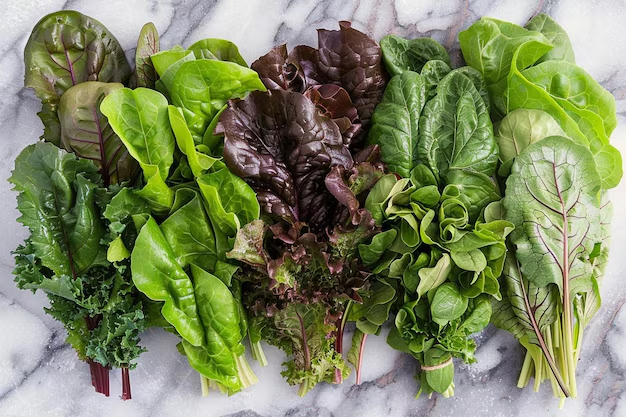
A superfood salad becomes more powerful when you mix various types of leafy greens. Each green has a unique nutritional profile, and combining them boosts the overall vitamin, mineral, and antioxidant content of your meal. For example, spinach offers iron and folate, kale is rich in vitamin K, and arugula provides a peppery kick along with cancer-fighting compounds.
Layering different greens not only improves nutrient density but also adds texture and flavor to your superfood salad. The mix of tender, crunchy, and slightly bitter leaves keeps the salad interesting and satisfying. It also helps ensure you’re not missing out on essential nutrients by sticking to just one type of leafy vegetable.
To maximize variety, rotate your greens weekly and consider adding seasonal or local options. A diverse base sets the foundation for a more balanced, health-supporting superfood salad that fuels your body with every bite.
Benefit: Different greens contain different nutrients. For example, spinach is rich in iron, while kale provides more vitamin C and fiber.
How to Use It: Instead of using just one type of lettuce, mix a variety of greens to get a wider range of nutrients. Combine nutrient-dense greens like kale, spinach, arugula, and Swiss chard. This adds more texture and flavor, while also ensuring a broader spectrum of vitamins and minerals.
Incorporate a Variety of Colors
Benefit: The more colorful your salad, the more nutrients it provides. Different colors represent different antioxidants, vitamins, and minerals.
How to Use It: Include colorful ingredients such as red bell peppers, tomatoes, carrots, beets, purple cabbage, and berries. Each color represents unique health benefits—carrots and sweet potatoes are rich in beta-carotene, while berries are high in antioxidants that support immune function and skin health.
Add Healthy Fats for Better Absorption
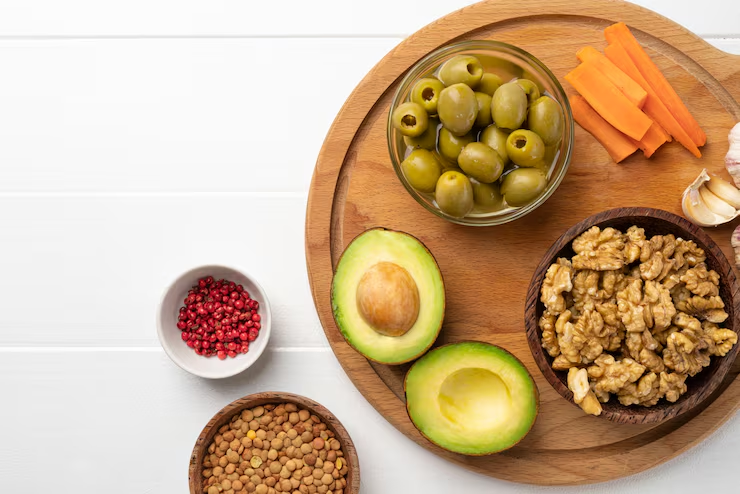
Adding healthy fats to your superfood salad isn’t just about flavor—it’s about nutrition. Certain vitamins like A, D, E, and K are fat-soluble, meaning they require fat to be absorbed by the body. Without the right kind of fat in your meal, you might be missing out on the full benefits of the nutrient-rich ingredients in your salad.
Great sources of healthy fats include avocado, olive oil, nuts, seeds, and even a small amount of cheese. These not only improve the nutritional profile of your superfood salad but also make it more satisfying and enjoyable to eat. A handful of walnuts or a drizzle of extra virgin olive oil can do wonders.
Incorporating healthy fats ensures that your body is able to fully utilize the antioxidants and phytonutrients found in greens, berries, and other superfoods. It’s a simple way to elevate the impact of your superfood salad on overall wellness.
Benefit: Many vitamins, like vitamins A, D, E, and K, are fat-soluble, meaning they need fat for proper absorption.
How to Use It: Add healthy fats like olive oil, avocado, nuts (such as almonds, walnuts, or cashews), and seeds (such as chia, flax, or pumpkin seeds). These not only help with nutrient absorption but also contribute to your body’s overall health by supporting brain function, heart health, and skin hydration.
Incorporate Superfoods Like Berries and Avocado
Adding superfoods like berries and avocado to your superfood salad is a delicious and effective way to enhance its nutritional power. Berries—such as blueberries, strawberries, and raspberries—are rich in antioxidants, fiber, and vitamins that support heart health, brain function, and immunity. Their natural sweetness also balances the savory components of the salad.
Avocados bring creamy texture and heart-healthy monounsaturated fats, which aid in nutrient absorption and help keep you full longer. They’re also packed with potassium, fiber, and folate, making them a key player in any superfood salad. Together with berries, they create a satisfying blend of textures and flavors.
By combining berries and avocado in your superfood salad, you get a powerhouse mix of antioxidants and healthy fats. These ingredients work together to support overall wellness while elevating the taste and appeal of your salad. It’s a simple upgrade with impressive health benefits.
Benefit: Superfoods are packed with antioxidants, fiber, and other nutrients that can significantly improve your health.
How to Use It: Toss in berries like blueberries, raspberries, and strawberries, which are high in antioxidants. Also, consider adding avocado for healthy fats and fiber, as well as chia seeds, flaxseeds, or goji berries for added nutrition.
Include a Protein Source for Satiety
Including a protein source in your superfood salad is essential for creating a balanced and satisfying meal. Protein helps repair tissues, build muscle, and keep you feeling full longer. Without it, even a salad packed with nutrients might leave you feeling hungry soon after eating.
Great protein options for a superfood salad include grilled chicken, boiled eggs, chickpeas, quinoa, tofu, or tempeh. These ingredients not only complement the taste and texture of leafy greens and vegetables but also enhance the nutritional profile of the salad. When paired with healthy fats and fiber-rich foods, protein ensures you stay energized and satiated for hours.
Adding protein to your superfood salad makes it more than just a light side dish—it becomes a complete meal. Whether you’re looking to support weight management, build muscle, or simply eat more mindfully, incorporating protein is a simple yet impactful step to improve your salad game.
Benefit: Protein helps to keep you full and satisfied, preventing hunger from sneaking up on you later.
How to Use It: Add a lean protein source to your superfood salad to make it more filling. Grilled chicken, chickpeas, quinoa, tofu, or salmon are all excellent choices. For a vegetarian option, try adding edamame or lentils. Protein helps with muscle repair and provides steady energy throughout the day.
Use Homemade Dressings Instead of Store-Bought
Using homemade dressings instead of store-bought options is a simple yet powerful way to elevate your superfood salad. Store-bought dressings often contain hidden sugars, unhealthy fats, preservatives, and excess sodium that can counteract the health benefits of your salad. Making your own at home ensures you’re using fresh, wholesome ingredients that nourish your body and enhance natural flavors.
A basic homemade dressing can be made with extra virgin olive oil, lemon juice, apple cider vinegar, and a touch of honey or mustard. You can also add herbs like oregano, basil, or dill for extra taste. These ingredients not only add delicious flavor but also bring additional nutrients and antioxidants that complement the benefits of a superfood salad.
By choosing homemade dressings, you take control of what goes into your body while adding a burst of freshness to your meal. It’s a small change that can make your superfood salad even more nutritious and enjoyable.
Benefit: Store-bought dressings can be packed with added sugars, preservatives, and unhealthy fats.
How to Use It: Make your own dressing using healthy ingredients. Combine olive oil, lemon juice, balsamic vinegar, Dijon mustard, and a bit of honey. You can also add herbs like oregano, basil, or parsley for extra flavor. Homemade dressings are fresher and allow you to control the ingredients.
Top It Off with Seeds and Nuts
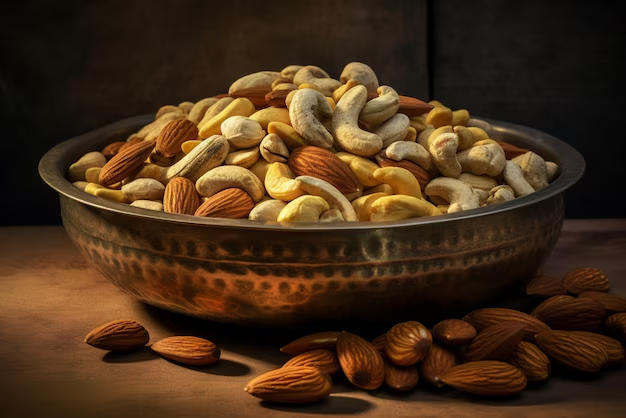
Topping your superfood salad with seeds and nuts is an easy way to boost both nutrition and flavor. These tiny powerhouses are rich in healthy fats, protein, fiber, and essential vitamins and minerals. From crunchy almonds and walnuts to sunflower seeds and chia seeds, they offer a satisfying texture that complements leafy greens, fruits, and vegetables.
Nuts like almonds and walnuts provide heart-healthy omega-3 fatty acids and antioxidants, while seeds such as flaxseeds, pumpkin seeds, and hemp seeds offer a plant-based source of protein and important minerals like magnesium and zinc. Adding just a small handful can turn your superfood salad into a more balanced and satisfying meal.
In addition to their nutritional value, seeds and nuts enhance the overall taste and visual appeal of your salad. Their nutty crunch pairs perfectly with fresh ingredients, making each bite more enjoyable. So don’t skip this topping—your superfood salad deserves the upgrade!
Benefit: Nuts and seeds provide healthy fats, protein, and a crunchy texture that adds variety to your salad.
How to Use It: Sprinkle your salad with a variety of seeds and nuts. Chia seeds, sunflower seeds, pumpkin seeds, and flaxseeds are excellent choices. Walnuts and almonds are rich in omega-3 fatty acids, which support heart health. The added crunch will also make your salad more satisfying.
Don’t Forget About Herbs and Spices
Don’t overlook the power of herbs and spices when preparing your superfood salad. Fresh herbs like basil, cilantro, mint, and parsley not only add vibrant color but also bring unique flavors and health-boosting antioxidants to your meal. They can brighten up the taste of leafy greens and pair beautifully with fruits, nuts, and homemade dressings.
Spices like turmeric, black pepper, cumin, or paprika can be lightly sprinkled over your salad or blended into your dressing for an extra layer of warmth and complexity. Turmeric, for instance, is known for its anti-inflammatory benefits, while black pepper enhances nutrient absorption. These small additions can significantly elevate both the flavor and the nutritional value of your superfood salad.
By incorporating herbs and spices, you transform a simple salad into a flavorful and aromatic dish. They allow you to get creative with seasoning while enhancing the health benefits of every bite of your superfood salad.
Benefit: Fresh herbs and spices like garlic, ginger, cilantro, and turmeric have powerful anti-inflammatory properties and can boost the flavor of your salad without adding extra calories.
How to Use It: Incorporate fresh herbs like basil, parsley, cilantro, or mint to add flavor. Add a dash of turmeric for its anti-inflammatory benefits, or a sprinkle of ground pepper to enhance digestion. Herbs and spices elevate the taste and provide a range of health benefits that go beyond basic nutrition.
Benefits of a Superfood Salad
Superfood salads are a powerhouse of nutrients and offer a wide array of health benefits:
Boosts Immune Function: Superfoods like berries, leafy greens, and citrus fruits are loaded with antioxidants and vitamins, especially vitamin C, which helps strengthen the immune system.
Improves Skin Health: The antioxidants, healthy fats, and vitamins found in superfood salads can improve skin texture and reduce the appearance of wrinkles and blemishes.
Supports Weight Loss: High in fiber and protein, superfood salads help with satiety, preventing overeating and helping with weight management.
Reduces Inflammation: Ingredients like turmeric, ginger, and avocados have anti-inflammatory properties that can help reduce chronic inflammation in the body.
Enhances Gut Health: The high fiber content of superfood salads promotes healthy digestion and gut flora, which is essential for overall health.
Conclusion
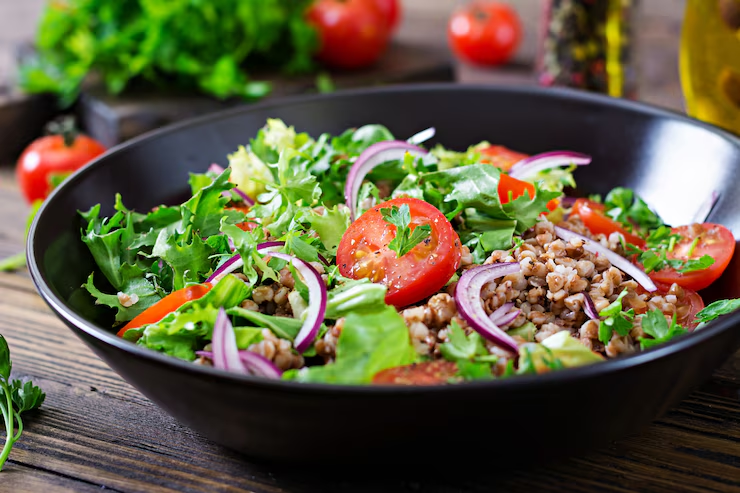
Superfood salad is more than just a health trend—it’s a smart and sustainable way to nourish your body daily. By including a colorful mix of nutrient-rich ingredients like spinach, kale, quinoa, berries, seeds, and lean proteins, a superfood salad becomes a powerful meal that fuels your body and mind.
Regularly enjoying a superfood salad can lead to improved energy, better digestion, and stronger immunity. These salads are packed with antioxidants, vitamins, and minerals that work together to protect your cells and support overall wellness. Plus, the diverse textures and flavors make eating healthy both satisfying and enjoyable.
With the simple tips in this guide, creating a superfood salad can become an easy habit. Whether for lunch, dinner, or a light snack, building your plate with superfoods helps you stay full, energized, and on track with your health goals. Start today and enjoy the vibrant benefits of every bite.
FAQs
Q1. What is a superfood salad ?
A superfood salad is a nutrient-rich meal made with ingredients known for their exceptional health benefits. Common components include leafy greens, berries, seeds, nuts, and vegetables. These salads are designed to provide maximum nutrition in one bowl.
Q2. How often should I eat a superfood salad ?
You can enjoy a superfood salad daily as part of a balanced diet. Eating one regularly supports overall health, boosts energy, and improves digestion due to the high fiber and antioxidant content.
Q3. Can I make a superfood salad ahead of time ?
Yes, you can prepare a superfood salad in advance. Keep the dressing separate until serving and store it in an airtight container to maintain freshness and crunch.
Q4. Are superfood salads suitable for weight loss ?
Absolutely. A superfood salad is low in calories but high in fiber and nutrients, helping you feel full longer while supporting healthy weight management.
Q5. What are the best ingredients for a superfood salad ?
Top ingredients include kale, spinach, quinoa, blueberries, avocado, chia seeds, and almonds. These offer a balance of vitamins, minerals, protein, and healthy fats for a truly nourishing superfood salad.
